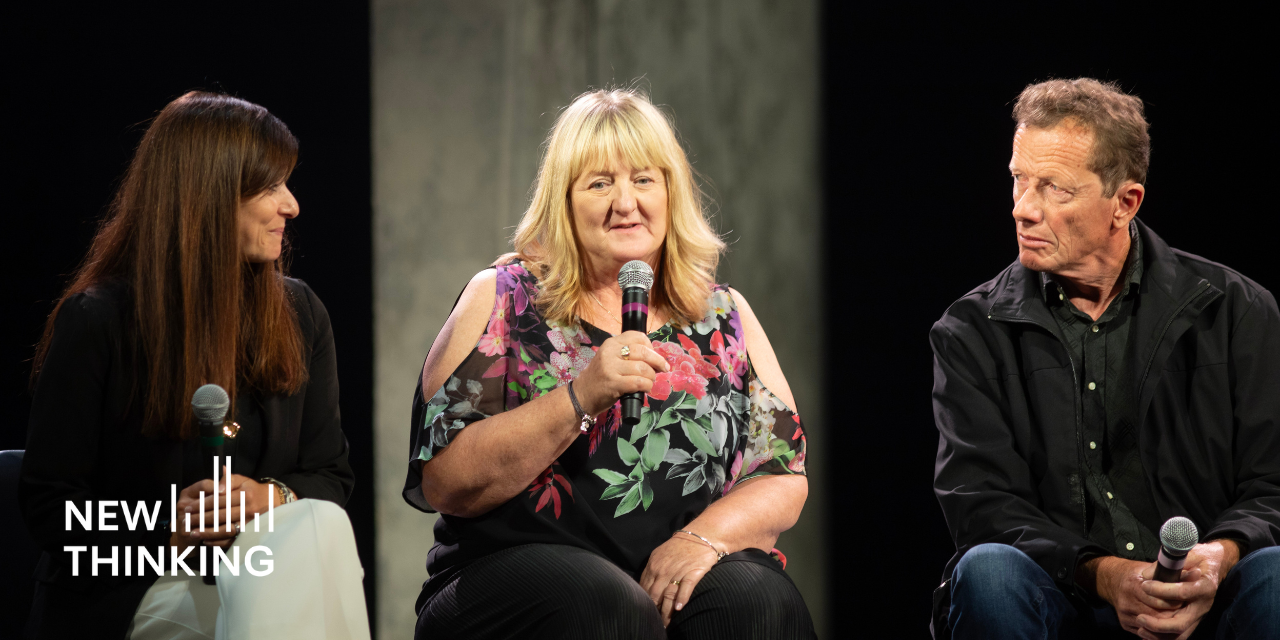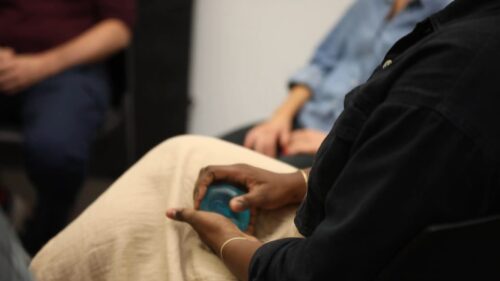Mary Kay Hudson, problem-solving court administrator for Indiana, discusses the challenges of coordinating problem-solving courts on a statewide basis.
Mary Kay Hudson, Problem-Solving Court Administrator, Indiana Judicial Center
In 2006, Mary Kay Hudson’s title was changed from “drug court coordinator” to “problem-solving court administrator” to reflect the inclusion of reentry courts in her portfolio at the Indiana Judicial Center (an agency of the Indiana Supreme Court responsible, among other things, for education, research, and certification of probation officers and courts). In June 2009, she spoke with Robert V. Wolf, director of communications at the Center for Court Innovation, about the challenges of coordinating problem-solving courts on a statewide basis.
When and why did your title change from drug court coordinator to problem-solving court administrator?
When I started working in a local drug court in Indianapolis in 1998 there were approximately five drug courts in Indiana, and we didn’t have legislation governing drug courts. In 2002, the Indiana legislature adopted statutes that created a framework for certifying drug courts and gave responsibility for the certification process to the Indiana Judicial Center. In October 2002, I accepted the position of drug court coordinator at the IJC. At that time there were approximately 12 operational drug courts.
The first reentry court in Indiana was established in 2001. In 2005, the judge of that court expressed interest in seeking legislation to support the reentry court model. The Judicial Conference supported adopting legislation authorizing reentry courts, and the legislature adopted the reentry court statutes in 2006.
At that time, the Supreme Court recognized the need to support the trial court judges’ interest in other problem-solving court models. Chief Justice Randall Shepard established the Judicial Conference Problem-Solving Courts Committee to direct and oversee activities related to the development and expansion of problem-solving courts, such as drafting rules, proposing legislation, and coordinating our education and training events.
In 2006, my title was changed from drug court coordinator to “problem-solving administrator” to include drug and reentry courts and any other varieties of problem-solving courts of interest to the judiciary.
Do the pieces of legislation you referred to require certification for drug and reentry courts?
Certification isn’t required, but it offers benefits. Our drug court statutes permit a judge in a certified drug court to accept a plea of guilty, withhold judgment pending drug court participation, and then dismiss the case upon successful completion of the drug court requirements. Certified drug courts and reentry courts may also charge a user fee and are eligible for federal Edward Byrne Memorial Justice Assistance Grant funding. We also have training opportunities available for team members of certified drug courts and reentry courts.
What activities does your job encompass?
We do a fair amount of field work related to our oversight duties, which include conducting certified reviews for drug courts and reentry courts established under the respective statutes. I serve as staff support for the Judicial Conference Problem-Solving Courts Committee and assist the committee with projects related to problem-solving courts, such as developing training events, rules development, and evaluation activities. Our office also responds to a lot of different questions from courts around the state regarding establishing problem-solving courts and implementation issues.
What kinds of issues do you deal with at your annual statewide problem-solving court conference?
We try to make the workshops of interest to the various team members in problem-solving courts. Last year we had a number of broadly-themed tracks, like a mental health services track, evidence-based practices track, legal issues track, and community supervision track.
It’s a challenge for us to host a conference of interest to everyone because there’s such a diversity of training needs. At this year’s conference we are planning tracks geared toward the six principles of problem-solving justice.
Right now your office is focused on drug and reentry courts. What other types of problem-solving courts are on the horizon?
Many Indiana judges are interested in mental health courts, family dependency drug courts, and domestic violence courts. A bill was introduced in the 2009 legislative session that would have created a statutory framework to expand the types of problem-solving courts supported by the Judicial Conference and certified by the Indiana Judicial Center. This included mental health courts, community courts, family dependency drug courts, and other models approved by the Indiana Judicial Center . Unfortunately, the bill didn’t get a hearing, but we hope it will be reintroduced in 2010. If it passes, the Problem-Solving Courts Committee will examine ways in which to best serve the needs of the various problem-solving courts, including planning, training and certification issues.
Are you seeing an interest in the community court model as well?
Community courts are included in our list of problem-solving courts and in the bill that was introduced this year, but so far the only one we have is the Indianapolis Community Court. We haven’t had as much interest across the state in community courts as we’ve had in mental health courts, family dependency courts, and domestic violence courts, which may be related to the fact that many of our courts are located in smaller, more rural areas.
According to its web page, the mission of the Indiana Problem Solving Courts Committee is “to encourage the broad integration of the problem-solving philosophy into the administration of justice to improve court processes and outcomes while preserving the rule of law.” How’s that process going?
One of the more significant signs that we’re making progress toward institutionalization is that our Judicial Administration Committee did an update to its weighted caseload study, which determines how to assess a judge’s workload. The committee included certified drug courts and reentry courts in the study. As a result, judges will now receive additional credit for cases heard in a certified drug court or certified reentry court.
Do you have any advice for states that are thinking about how to implement statewide coordination of problem-solving courts?
I recommend the court get a sense of the local judiciary’s level of interest in the various problem-solving court models. Our office surveyed the trial court judges in 2007 and learned that after drug courts and reentry courts, other models of interest include mental health courts, family dependency courts, and domestic violence courts. I recommend forming a state-level committee or commission dedicated to problem-solving courts if the state does not currently have such a committee. It has also been helpful to network with representatives from other states to learn about how problem-solving courts are evolving in those states.

